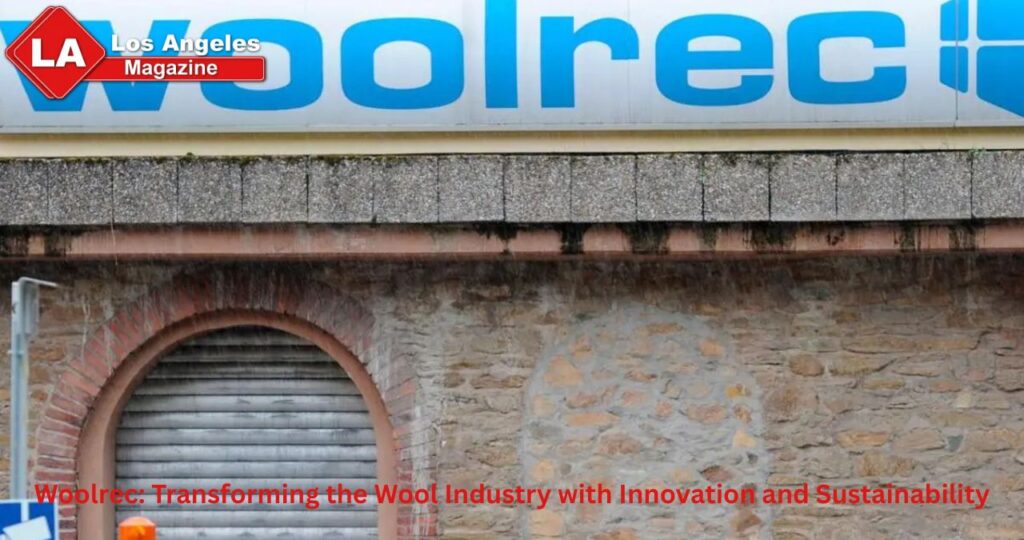The wool industry, long regarded as a cornerstone of textile production, has undergone significant changes over the past few decades. With increasing demand for sustainability and ethical practices in the fashion and textile sectors, new companies have emerged to address these needs. One such company, Woolrec, is revolutionizing the wool industry by combining traditional practices with modern innovation. Known for its commitment to environmental sustainability and product quality, Woolrec is becoming a leading player in the wool recycling and manufacturing sectors.
In this article, we will explore Woolrec‘s role in transforming the wool industry, its impact on sustainability, and the innovative solutions it provides to the challenges the wool industry faces today.
What is Woolrec?
Woolrec is a company that specializes in the recycling and repurposing of wool materials, turning them into high-quality products for a variety of industries. It was founded with the vision of reducing the environmental impact of wool production and helping the wool industry transition towards more sustainable practices. Woolrec’s core focus is to help minimize waste, promote circular economy principles, and provide a more eco-friendly alternative to traditional wool manufacturing.
Woolrec’s main business model revolves around sourcing wool that is either discarded or used and recycling it to produce new, usable wool-based products. The company works with wool from a variety of sources, including worn-out wool garments, industrial waste, and wool by-products from the textile and fashion industries. By recycling these materials, Woolrec is not only reducing waste but also creating products with minimal environmental impact, making it a pioneer in sustainable wool production.
The Wool Industry’s Environmental Challenges
The global wool industry has long faced criticism for its environmental impact. Traditional wool production is resource-intensive, requiring significant water, energy, and land resources. Additionally, the wool-growing process often involves the use of harmful chemicals, which can have detrimental effects on both the environment and the wool-producing animals. Furthermore, the disposal of wool waste, such as discarded garments or offcuts from production, contributes to pollution and landfills.
As the world becomes more aware of environmental issues, there is growing pressure on the wool industry to embrace sustainable and ethical practices. Consumers are increasingly looking for products that are made using environmentally friendly processes, and companies like Woolrec are stepping up to meet this demand. Woolrec’s commitment to recycling wool, reducing waste, and adopting sustainable production methods makes it an integral player in the industry’s efforts to reduce its environmental footprint.
Woolrec’s Contribution to Sustainability
One of Woolrec’s core principles is the promotion of circular economy practices within the wool industry. Circular economy refers to an economic model that aims to eliminate waste and the continual use of resources through reusing, repairing, and recycling materials. In the case of wool, this means extending the lifecycle of wool products through innovative recycling methods.
Woolrec’s innovative approach to recycling wool helps reduce the need for new wool production, which in turn reduces the demand for land and water resources used in the farming process. By repurposing discarded wool, Woolrec is helping prevent large amounts of textile waste from ending up in landfills, where it would take years to decompose. The company’s efforts in recycling wool also contribute to a reduction in the use of chemicals, as recycled wool requires fewer processing chemicals compared to new wool production.
Woolrec’s commitment to sustainability also extends to its packaging and logistics. The company uses eco-friendly materials for packaging, further reducing its environmental impact. By taking these comprehensive steps, Woolrec is setting a benchmark for other companies in the textile industry, demonstrating that it is possible to be both profitable and sustainable.
Woolrec’s Innovative Recycling Processes
Woolrec has developed an innovative wool recycling process that involves cleaning, carding, and re-spinning wool fibers from various discarded wool products. Here’s a closer look at how Woolrec’s process works:
- Collection of Wool Waste: Woolrec sources its wool from a variety of sources, including industrial waste, post-consumer garments, and wool offcuts from production facilities. The company works with partners from different sectors to collect and ensure that no wool is wasted.
- Cleaning and Sorting: Once collected, the wool is carefully cleaned to remove dirt, oils, and other contaminants. This process ensures that the recycled wool fibers are of high quality and ready for reuse. Woolrec also sorts the wool according to its type and quality, ensuring that the final product meets the required standards.
- Carding and Spinning: The cleaned wool is then carded, a process that involves untangling and aligning the fibers to prepare them for spinning. The carded wool is spun into yarn, which can then be used to create a variety of wool products, from textiles to insulation materials.
- Product Creation: Woolrec produces a wide range of products from recycled wool, including apparel, home goods, insulation, and furniture fillings. These products are made to the same high standards as products made from virgin wool, ensuring that customers receive the same quality while contributing to environmental sustainability.
Woolrec’s Impact on the Textile and Fashion Industry
The fashion industry has been a significant contributor to global waste and pollution, and the growing demand for sustainable fashion has forced companies to rethink their practices. Woolrec has positioned itself as a key player in helping the wool sector meet the demand for sustainable products. By recycling wool, the company is helping to close the loop in textile production, enabling a more responsible approach to fashion.
Woolrec works closely with fashion brands, designers, and manufacturers to incorporate recycled wool into their collections. This collaboration is crucial for promoting circular economy practices within the fashion industry and demonstrating that sustainable materials can be used to create high-quality, fashionable garments.
Additionally, Woolrec’s work has also had a significant impact on the growing demand for eco-friendly textiles. As more consumers look for clothing made from renewable and recyclable materials, Woolrec’s recycled wool products offer an attractive solution for those seeking ethical and environmentally responsible fashion choices.
Future Prospects for Woolrec
As the demand for sustainable materials grows, the future looks promising for Woolrec. The company is constantly improving its recycling processes, developing new products, and expanding its partnerships within the textile industry. With growing consumer interest in eco-friendly products, Woolrec is well-positioned to lead the way in the sustainable wool sector.
Furthermore, as governments and international organizations continue to implement stricter environmental regulations, businesses like Woolrec that prioritize sustainability will have a competitive advantage. The company’s work in recycling and sustainability not only benefits the environment but also offers economic opportunities for growth and expansion.
Conclusion
Woolrec is a forward-thinking company that is making significant strides in transforming the wool industry through innovation and sustainability. By focusing on wool recycling, the company is helping to reduce waste, conserve resources, and provide high-quality products for a variety of industries. As the world moves toward more sustainable practices, Woolrec’s commitment to a circular economy and environmentally responsible production methods positions it as a leader in the effort to create a more sustainable future for the wool industry.
As consumers and businesses alike continue to prioritize sustainability, Woolrec’s impact on the wool industry will only grow, contributing to a more eco-friendly and circular textile economy.



